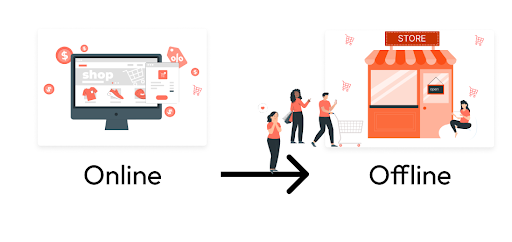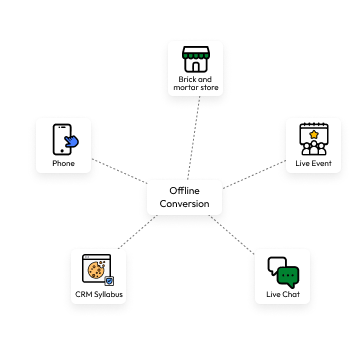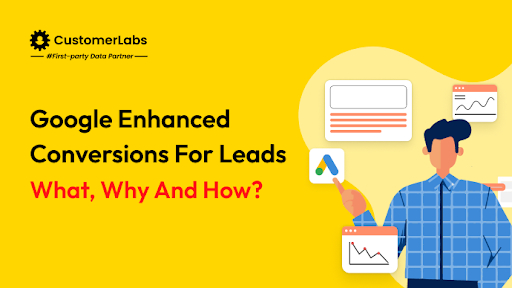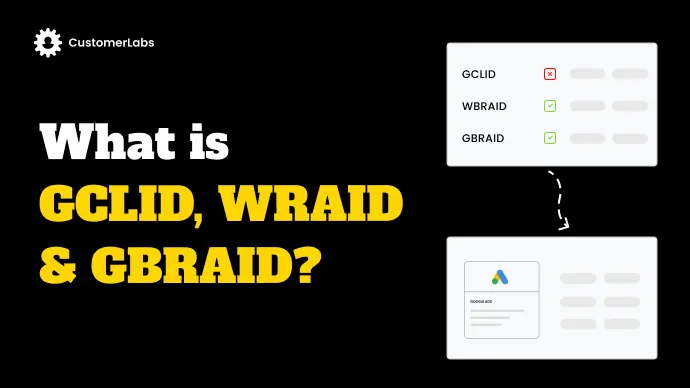Hey! If you’re running an eCommerce business and making sales both online and in your physical stores, or if you’re running a lead generation business and your conversions happen offline despite getting leads through online Ads, this blog is for you.
Because you most likely use Offline Conversion Tracking to measure the effectiveness of your online campaigns.
Now, are you measuring your offline conversions effectively?
Tracking offline conversions effectively is challenging due to the complex integration of offline data, lack of awareness about best practices, privacy constraints, and a lack of user consent. These challenges cause gaps in conversion data since offline conversions cannot be tracked effectively and sent to ad platforms.
If you’re a marketer looking for a way to improve the performance of your ad campaigns, these best practices have been curated just for you. Read through and follow them.
But before that…
What are offline conversions and what is offline conversion tracking?

Imagine a customer, Sarah, who looks at an advertisement of a local furniture store online. Intrigued, she clicks on the ad to explore the store but doesn’t make a purchase immediately on the website.
Later that day, Sarah decides to visit the store in person to see the furniture firsthand. Impressed by the quality, she makes a purchase. This is Offline Conversion.
At the checkout counter when she purchases, she provides her information like name, contact number, and email address. The store records Sarah’s purchase and her first-party data using a CRM system.
The marketers will send this offline purchase data to online ad platforms like Google Ads and Meta Ads. The ad platforms will attribute her offline purchase data to the ad she interacted with earlier. This is Offline Conversion Tracking.
Note: Offline Conversions don’t have to be in-store purchases. It could be through a phone call, live chat, live event, and so on.

Refer to this blog to learn how to implement Offline Conversion Tracking seamlessly.
The best practices for offline conversion tracking
1. Automating the flow of offline event data for real-time tracking
Many businesses struggle with gaps in offline conversion tracking. Downloading data from the CRM and uploading it to ad platforms at intervals creates delays and misses valuable data points.
The solution? Automate the flow of offline event data to the ad platform as soon as a conversion occurs.
By automating this flow between offline data and ad platforms, you can optimize the ad campaigns in real-time increasing your ad attribution, campaign performance, and access to valuable insights that enhance your marketing efforts.
Note: You can automate the event data flow with our no-code 1PD Ops! Talk to our experts here.
2. Unified Tracking: Assign external id
One of the best practices of offline conversion tracking is assigning an external ID or a user ID to everyone who lands on your website. This ID acts as a unique identifier, allowing seamless tracking of user activity online and offline.
By syncing this ID with the ad platforms, they can attribute offline conversions to online ad interactions.
The ad platforms can also match these IDs to paint a complete picture of the customer journey when you send conversion data back to ad platforms. This simple yet effective practice is recommended by major platforms like Google and Meta for accurate tracking.
3. Adding values to your conversions
Assigning values for the final conversion is the key to effective Offline Conversion Tracking.
So instead of just sending the conversion data, you send the value(such as the worth of their purchase) along with it to the ad platforms.
By assigning these values, you can track which actions are most valuable and optimize your marketing accordingly.
4. Bidding for Value: Maximize Conversion Impact
Leverage value-based bidding algorithms in Google Ads by sending the lead data and offline conversion data.
By sending offline conversion data to the ad platforms, you empower their algorithms to learn which users hold the highest value.
Picture it like this: you’re not just bidding for clicks or conversions; you’re bidding for actual value.
It’s a smart and strategic approach that maximizes the impact of your ad campaigns by increasing the value of your conversions rather than optimizing for lead quantity.
5. Going beyond the final conversion
It’s common practice for marketers to focus solely on sending only the final converted leads to ad platforms.
Here’s the catch: that might not be the best approach.
Leading ad platforms recommend syncing all the conversions on all the leads that you get into ad platforms by telling it which stage each lead is.
A conversion happens in several stages.
Now, let’s see an example of our very own 1PD Ops, CustomerLabs.
Whenever we get a lead, they go through the following stages:
- Enquiry and Contacted
- Meeting booked
- Qualified solution fit
- POC
- Won
When they enquire and contact our sales team, the average conversion value might be $80.
The conversion rate from enquiry to meeting booked is 50%. When they book a meeting, that action might be worth $400.
The conversion rate from meeting booked to qualified solution fit is 25%.
If they are a qualified solution fit, that could be valued at $1600.
Then we move to the POC stage and we get a conversion rate of 15% while moving to POV from qualified solution fit. That is worth $8000.
Finally, a lead is won. 5% of the leads move from POV to the won stage. And the final conversion value is $16000.
Instead of just sending data in the won stage, it’s essential to send data from every single stage of your conversion cycle.
It’s not enough to only send data at the final stage of your conversion process. You should send data from every stage of the conversion cycle. This comprehensive approach provides a better understanding of the conversion process, which in turn allows for improved ad campaign optimization and targeting.
After sending all leads from different funnel stages to ad platforms like Google Ads or Meta Ads, the next crucial step is optimizing for each funnel stage. Instead of treating the entire funnel as a single entity, the strategy is to focus on optimizing each stage individually. This approach enables ad algorithms to learn faster and exit the learning phase sooner, generating more leads.
6. Optimizing for the lowest conversion point possible
To successfully optimize campaigns, ad algorithms require at least 50 conversions. However, some businesses can’t get more data that has final conversions, which can be challenging for ad platforms to give you better results.
However, a smart strategy can be carried out as follows.
Begin by optimizing the lowest conversion point. Then, you can optimize for the following conversion stage. The more conversions you get, the more the ad algorithm will be optimized.
When you get enough data for this stage, you can move on to optimizing the next conversion stage.
As you optimize and gather more data at each stage, you’ll ultimately see a boost in conversions and better overall performance.
7. Accurate attribution: Implementing Consent Mode v2
It’s important to include consent parameters when sending conversion data to Google Ads. Without these parameters, Google Ads will not use the conversion data, leading to a drop in conversions and remarketing lists.
Sending offline conversion data back to Google Ads along with the consent parameter also helps Google accurately attribute the conversions to the ads that resulted in the conversion. Therefore, it is crucial to have Google consent mode v2 for offline conversion tracking.
You can use the CustomerLabs 1PD OPs tool to seamlessly append the consent parameters to the offline conversion data and easily sync it with Google Ads for better offline conversion tracking.
8. Driving AI-based campaigns
Harnessing the power of AI-driven campaigns is the final piece of the puzzle in the efficiency of offline conversion tracking.
As ad platforms have evolved with AI-based algorithms through performance max campaigns or advantage plus shopping campaigns, it’s crucial to feed the ad platforms with the right data to drive optimal results.
Along with online data, By providing accurate first-party data of your customers to AI-based algorithms through offline conversion tracking, you enable them to learn and optimize effectively. With offline conversion tracking, you provide AI with the data it needs to target the right users and drive better outcomes for your campaigns.
It’s a seamless integration of technology and first-party data that leads to better performance in your ad campaigns. So, if you’re ready to take your ad campaigns to the next level, leveraging AI with the right first-party data through offline conversion tracking is the way to go.
To sum it all up…
In essence, effective offline conversion tracking is crucial for businesses operating across online and offline channels. Yet, navigating its complexities demands a strategic approach.
By implementing these best practices for offline conversion tracking, marketers can bridge the gap between online interactions and offline actions. This not only enhances campaign performance but also ensures a better understanding of customer behavior.






